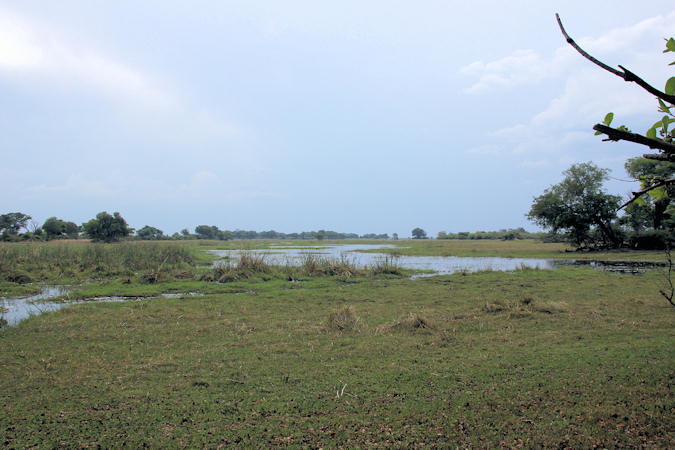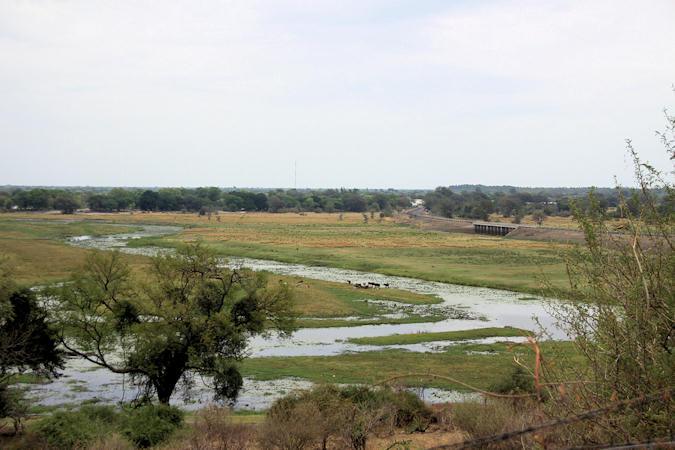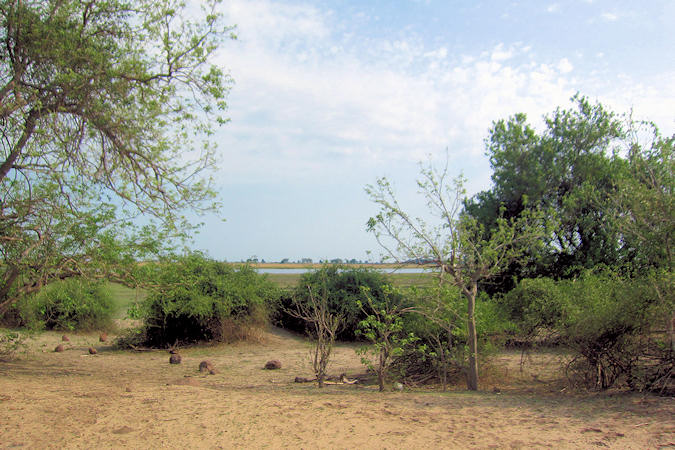Botswana
Things to DO
Okavango Delta
 |
|||||
The Okavango Delta is a swampy inland delta formed where the Okavango River reaches a tectonic trough in the central part of
the endorheic basin of the Kalahari. All the water reaching the delta is ultimately evaporated and transpired and does not flow into any
sea or ocean.
The Panhandle
Look at the map of the Okavango Delta and you'll see that it's shaped like a frying pan, with the main river flowing down the centre of
the handle, from the northwest.
Here you'll find the raw edge of Botswana's safari industry, camps on the edge of the Delta run by local communities - without marketing
aids or slick glossy brochures.
The Panhandle is not known for big game and traditional wildlife safaris are not an option; this is the area for mokoro safari or walking
safari trips into the Okavango Delta. However this is a first class area for birding and there are plenty of areas with deep-water channels
where hippo's can be seen.
Nature
; This is a selection of my vieuwings.
Kasane
 |
|||||
The administrative centre of Chobe District, Kasane is on the surface just a small town in the northeast corner of Botswana.
It lies on the southern bank of the Chobe River, a few kilometres from the confluence with the Zambezi - where the borders of Zambia,
Zimbabwe, Namibia and Botswana meet a point.
While the town is of limited interest in itself, for many people Kasane is a relaxing place to stay for a couple of days and to take
advantage of its proximity to Chobe National Park, affording opportunities of boat cruises and game drives into the park.
Chobe National Park
The original inhabitants of Chobe were the Bushmen, followed by the – impressively named – Hambukushu, Bayei and Basubiya.
In the 1850s, locals saw explorer David Livingstone passing through the area on his way to the Victoria Falls, and some big-game
hunters seeking trophies and ivory.
Luckily, for all the flora and fauna of this unique land, the area was first protected as a game reserve in 1961 and proclaimed as
national park in 1968.
 |
|||||
It takes its name from the Chobe River, which flows along the park's northern boundary and forms the border between Botswana
and Namibia's Caprivi Strip.
The river is the region's heartbeat, providing a year-round source of water for the multitude of animals and birds that call the park home.
Its fertile floodplains combine with the grasslands, mopane woodland, and thick scrub in other areas of the park to create a patchwork
of habitats that together provide shelter for one of the greatest concentrations of game on the African continent.
The Chobe River constitutes the ideal habitat for water-dependent animals, including hippos, Nile crocodiles, waterbuck, and the
near-threatened red lechwe antelope.
Chobe National Park is a hotspot for birders, with over 450 recorded species; the near-threatened African skimmer is a top spot along
the river
See my
Birds-
and
Mammals-
selection for some pictures